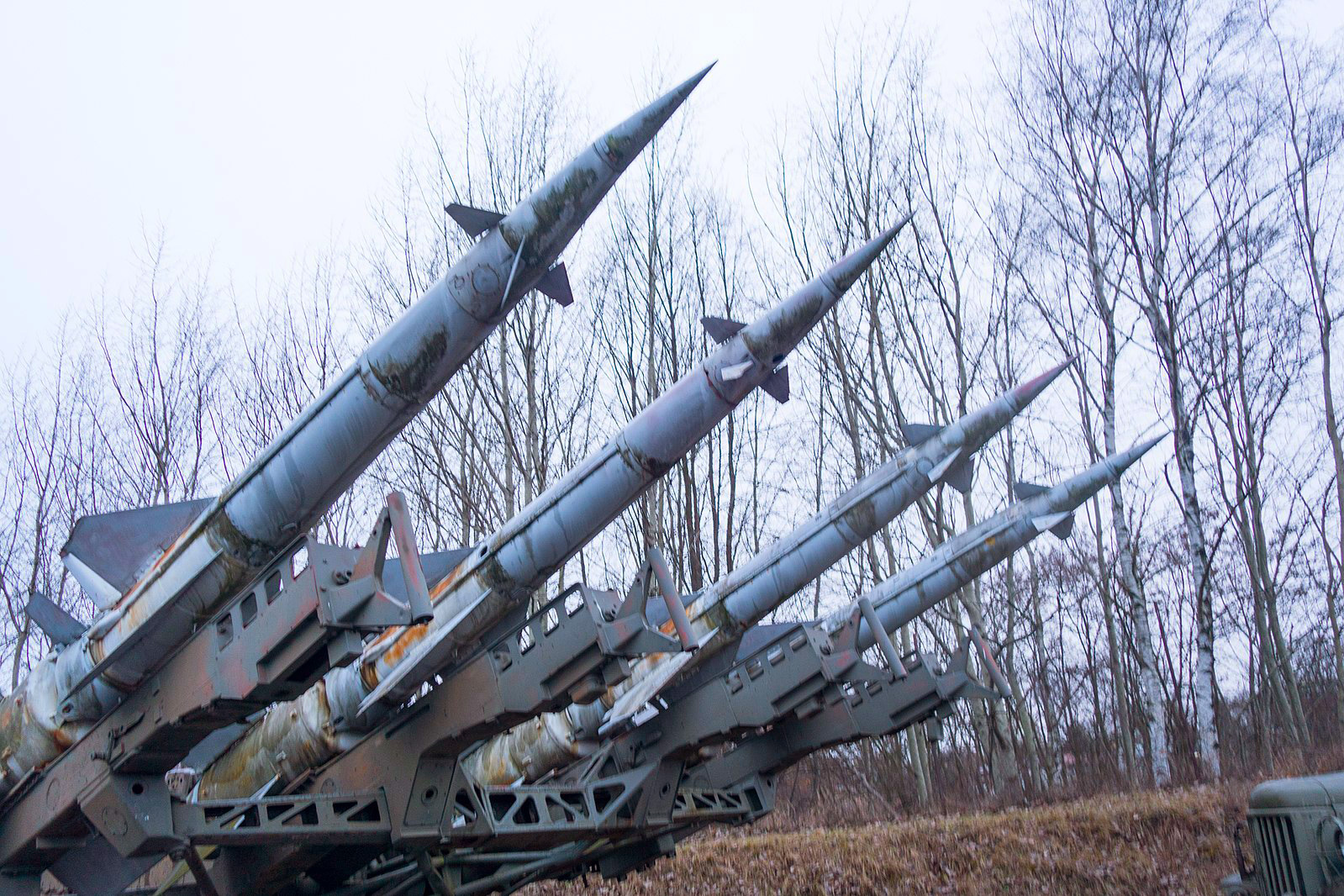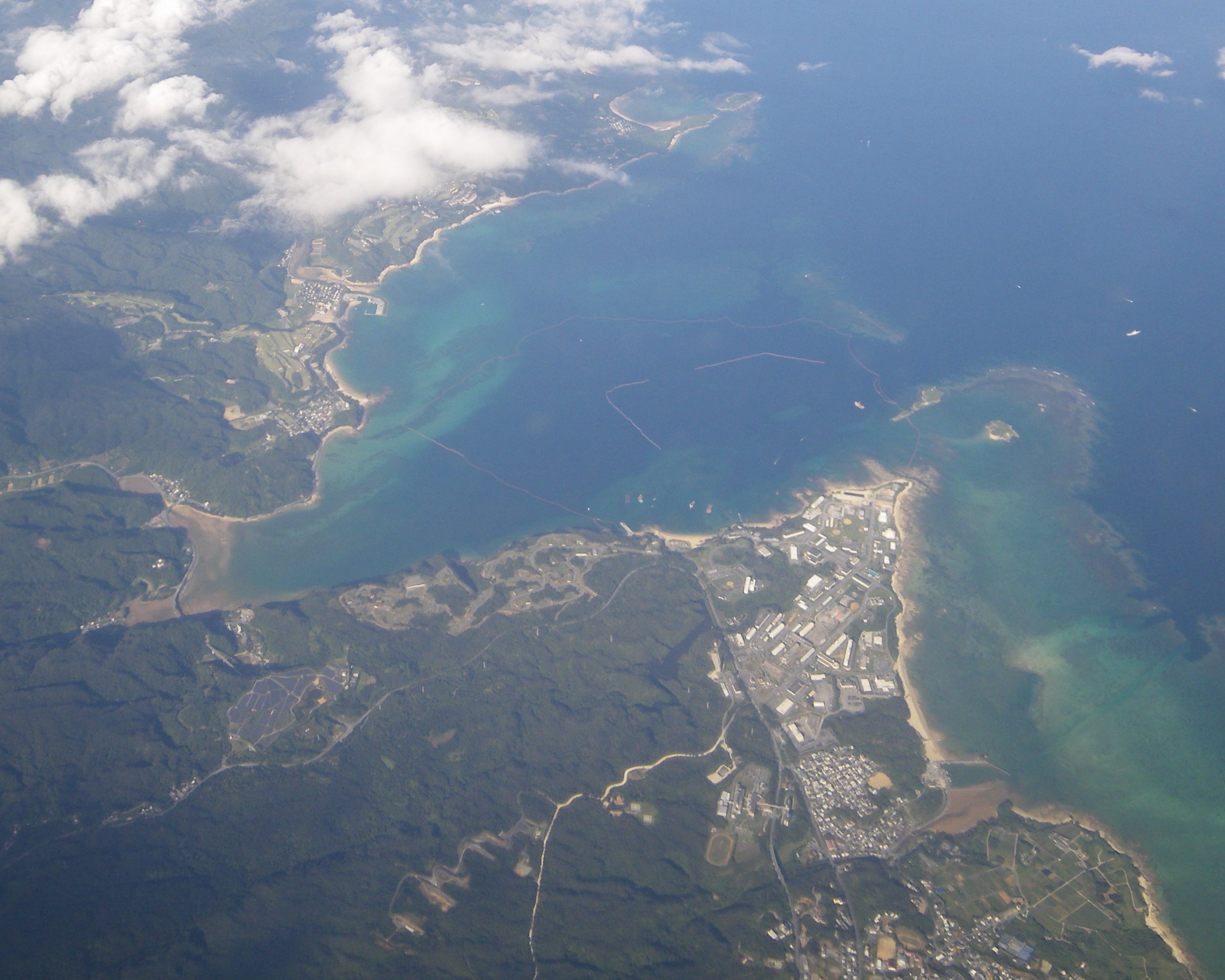International tensions between North Korea and the rest of the world hit a high point this September, when Chairman of North Korea Kim Jong Un sanctioned the launch of a mid-range nuclear missile that flew directly over northern Japan before landing in the Pacific Ocean. For the past several years, North Korean leadership has been constantly reprimanded by the international community for the continued development of its nuclear program, and this launch inspired a similar string of condemnations from world leaders. Perhaps the most extreme reaction came from President Donald Trump, who stated in a speech to the United Nations, that the U.S. would completely destroy North Korea if necessary.[1]
But even though Trump may have harsh words for the North Korean government, he, along with the rest of the world, may be ignoring a larger global development with far greater military implications. Increasing global tensions from North Korea, the United States, and other major nuclear states could very well bring about the growth of global nuclear proliferation.
To understand why global proliferation might be in the cards, we must first look into why countries like North Korea have been so adamant and aggressive in building their nuclear arsenal. Since the end of the Korean War in 1953, North Korea has made it its mission to slowly but surely develop its nuclear program, beginning with gaining plutonium processing technology from its former communist ally, the Soviet Union in the early 1960s.[2] In the following decades, North Korea started developing uranium mines, fuel rod fabrication factories, and multiple nuclear processing facilities and reactors. The main motivation for this development was the United States housing nuclear warheads in South Korea. However, after then-President George H.W. Bush announced the withdrawal of these weapons in 1991, the North Korean nuclear program slowed its progress significantly, even going so far as to sign the International Atomic Energy Agency’s (IAEA) agreement to repurpose its nuclear facilities away from weapon development.
In spite of this, the second President Bush imposed multiple sanctions on North Korea in 2001 in order to further decrease its nuclear programs and push for a “less threatening North Korean conventional military posture.”[3] North Korean officials saw this as an obvious attempt to delegitimize and disempower the country’s military standing, and responded by making clear that they had no intention to halt any nuclear development programs in 2003. Flash forward to today, and the North Korean state has around 60 nuclear weapons, all with short and mid-range distance capacities. They are currently apparently working on intercontinental capabilities for their missiles, and are rumored to have recently developed a hydrogen bomb last year.[4][5]
In short, the principal motivator for North Korea’s nuclear developments has been fear and threat from the United States and other allied powers. The North Korean government believes that the only way for them to ensure its own safety from nuclear devastation is to obtain nuclear weapons of its own. Especially in the wake of President Trump’s incendiary comments at his address at the UN, the North Koreans have felt an increased pressure and threat from the U.S. and the international community, with some North Korean diplomatic officials interpreting the President’s speech as an informal declaration of war.[6] The idea of this security dilemma goes back to the concept of mutually assured destruction from the Cold War, and is currently being adopted by more and more nations around the world as their justification for a more developed nuclear arsenal.
Nations in extremely close proximity to North Korea, for example, are adopting this approach in the wake of Kim Jong Un’s ruthless development of nuclear weapons. South Koreans have shown increasing support for nuclear growth in recent years, with around 68%of citizens supporting the return of the nuclear warheads that were withdrawn by President H.W. Bush, and 60% saying that South Korea should invest in its own nuclear development programs to rival its neighbors to the north.[7] Additionally, the Liberty Korea Party in South Korea has been recently trying to coordinate efforts with Washington lawmakers to bring these nuclear weapons back to the peninsula.
Similar sentiments are held by some Japanese officials in the wake of the recent missile launch that flew over the country in early September. Japan’s new Minister of Defense, Itsunori Onodera, has already set plans in motion to significantly increase the nation’s air defense programs by 2021 and is also currently advocating heavily for Japan to extend its offensive nuclear capabilities to protect itself from the possibility of a North Korean nuclear attack.[8] Furthermore, given the extensive nuclear research Japan has done in relation to its nuclear energy programs, it has all the tools, facilities, and resources to independently begin the development of its own nuclear weapons relatively quickly.[9] As North Korea’s closest neighbors at the greatest risk of a devastating attack, it makes sense why these nations would be so active in their proliferation efforts. It is still unclear whether South Korea or Japan will follow this course of action, with South Korea’s Prime Minister Moon Jae-in stating that actions like these could potentially lead to a nuclear arms race in East Asia, a possibility which is particularly volatile and undesirable.[10] However, many global actors and citizens view this as an inevitable solution to ensure the protection of the region from any nuclear attacks.
Here is where the issue turns global. What if other countries start feeling the need to develop their own nuclear weapons due to a similar security dilemma? In regions like Southern Asia, the Middle East, and Eastern Europe, this concept is not too farfetched.
The only nation whose nuclear arsenal rivals that of the United States is Russia. While we mainly associate Russian nuclear development with the Cold War era, the nation has not let up its development of new nuclear weapons in recent years. In past months, Russia, under the guidance of President Vladimir Putin, has been undergoing research and testing for its new intercontinental ballistic missile, the RS-28 Sarmat (commonly known as “Satan 2”), which Russian military officials say will be ready for potential launch as early as 2018.[11] Russia has been seen as an increasingly aggressive military threat, and the renewal of its nuclear program only reinforces this fact. The danger that Russia poses most alarms the nations of the former Eastern Bloc in Europe. In their eyes, there is an imminent risk that Russia will attempt to reclaim this territory in order to rebuild the former Soviet Union, and an enhanced nuclear arsenal will only strengthen Putin’s potential to carry this out. In order to prevent this, Eastern European nations might feel a motivation to develop their own nuclear weapons as a means of deterrence against Russian aggression. Poland has asked NATO and the United States in the past for access to nuclear weapons for its own security, and many international political scholars have argued that if Ukraine were in possession of nuclear weapons in 2014, it would have prevented Russia from invading the Crimean Peninsula.[12][13]
A somewhat comparable situation is present in the Middle East, as Iran has been attempting to expand its nuclear program for the past decade or so in response to the constant nuclear threat it feels from the United States and its close neighbor Israel. It is no secret that the United States has one of the most developed nuclear arsenals in the world, and Israel’s nuclear capabilities are almost as advanced, due to the fact that it has shared nuclear research and technology with the U.S. for years.[14] Considering Iran’s strained historic ties with the United States, as well as its open opposition to the Israeli state, it seems somewhat reasonable that it would feel a threat to its own nuclear security from these nations. Thus, Iran feels this is a justifiable motivation to build up its own nuclear arsenal for the purpose of self-defense.[15] The Iran nuclear deal of 2015 was an effort by the international community to halt Iran’s efforts toward developing a nuclear weapon. However, the results of said deal have been far from ideal, as it has no guidelines preventing Iran from missile testing and development during the ten-year period for which the deal is active.[16] Additionally, the provisions and oversight from the IAEA are not solid enough to actually determine whether Iran is fully following the details of the agreement.[17] This still leaves a relative amount of autonomy for the Iranian government to grow its nuclear programs, albeit at a slower rate.
A similar power struggle exists in South Asia between India and Pakistan, both nations which have developed nuclear weapons already. Efforts have been made by the international community to decrease the size of these nations’ nuclear arsenals, but they have been largely unsuccessful.[18] Tensions between the two nations have been high ever since the formation of the Pakistani state after the Partition of India, and nuclear weapons have become the method of choice to mediate this conflict as of late.
Currently, Pakistan’s nuclear program is developing at such a rapid rate that it is set to surpass the size of those in India, the United Kingdom, and France within five years.[19] With both Pakistan and India devoting more resources to their respective nuclear programs, they are expected to create nuclear stockpiles so massive that they closely resemble levels of the Cold War.[20] While some believe this would worsen the already unstable relationship between the two countries, others argue that this could lead to a nuclear armistice, easing the current military tensions.
If we’re using North Korea as our model, a secondary motivation for gaining nuclear weapons is a desire to be taken more seriously as an international military actor. While it is not known whether this will be successful in North Korea, many other nations might share this line of thinking. India, for example, has been pushing for an expansion of its nuclear program to focus on China, engaging in a contemporary arms race between the two nations.[21] India and China have increasingly perceived each other as rivals, especially economically. But India’s expansion in nuclear power is supposed to push the nation to be seen as the dominant and superior regional power by the international community. Another reinforcement of power can be seen with NATO nations after the United States brought up the prospect of withdrawing from the military alliance earlier this year.[22] As some in the international community may view NATO as having less authority without the military resources from the U.S., these Western European nations (most notably Great Britain, France, and Germany) are considering restarting their nuclear expansion in order to maintain the strong military presence the international organization previously had.[23]
Since the end of the Cold War, the UN has made numerous efforts to end proliferation and eliminate all nuclear weapons in an attempt to avoid the threat of devastating nuclear warfare arising in the future. Despite almost all member nations of the UN signing onto these agreements, the results have not been entirely as anticipated. Change up until this point has been reasonably incremental, but as of late, these agreements have been derailed. This stems from the fact that too many countries to which this international policy most pertains – i.e. the nuclear states – have not been present at these nonproliferation agreement talks.[24] It is almost inevitable that these nuclear agreements will be failures if the countries that these resolutions are targeted at do not even acknowledge their significance. Instances like these increasingly show that diplomacy alone may not be the most effective method of achieving peace in a post-nuclear world.
Nuclear non-proliferation has been seen as the ideal solution to preventing large-scale nuclear warfare and its devastating effects. However, with increasing global instability and increasing distrust of other nuclear states, some nations see the only logical solution to protecting the safety and security of their countries as developing nuclear weapons of their own. While non-proliferation would be superior for preventing any nuclear conflict from arising in the future, as time goes on, the prospect seems less likely. It is seldom that the ideal scenario comes to fruition, and it appears that the future of the nuclear world will play out similarly. Global proliferation does seem like a scary idea, and that’s because it is. But it is a reality that we should start accepting now in order to be better prepared for it in the future.
Sources
[1] Aleem, Zeeshan. “Trump’s message to the world at the UN: every country is on its own.” Vox. September 19, 2017. https://www.vox.com/world/2017/9/19/16332770/trump-unga-speech-north-korea-iran.
[2] “North Korea.” Nuclear Threat Initiative – Ten Years of Building a Safer World. http://www.nti.org/learn/countries/north-korea/nuclear/.
[3] Ibid.
[4] Ibid.
[5] “North Korea’s nuclear weapons: Here is what we know.” News | Al Jazeera. September 17, 2017. http://www.aljazeera.com/news/2017/05/north-korea-testing-nuclear-weapons-170504072226461.html
[6] “North Korea accuses US of declaring war.” BBC News. September 25, 2017. http://www.bbc.com/news/world-asia-41391978.
[7] Rogin, Josh. “Opinion | A South Korean delegation asks Washington for nuclear weapons.” The Washington Post. September 14, 2017. https://www.washingtonpost.com/news/josh-rogin/wp/2017/09/14/a-south-korean-delegation-asks-washington-for-nuclear-weapons/?utm_term=.2de0647b1476.
[8] Funabashi, Yoichi. “North Korea’s Nuclear Weapons, Japan’s Bind.” The New York Times. September 13, 2017. https://www.nytimes.com/2017/09/13/opinion/north-korea-nuclear-weapons-japan.html.
[9] Large, John H. “THE ACTUAL AND POTENTIAL DEVELOPMENT OF NUCLEAR WEAPONS TECHNOLOGY IN THE AREA OF NORTHEAST ASIA.” May 2, 2005. https://web.archive.org/web/20070710105632/http://www.largeassociates.com/R3126-A1-%20final.pdf.
[10] Rogin, Josh. “Opinion | A South Korean delegation asks Washington for nuclear weapons.” The Washington Post. September 14, 2017. https://www.washingtonpost.com/news/josh-rogin/wp/2017/09/14/a-south-korean-delegation-asks-washington-for-nuclear-weapons/?utm_term=.2de0647b1476.
[11] Silva, Cristina. “Russia is testing a new nuclear weapons system known as Satan. It’s big enough to destroy France.” Newsweek. March 29, 2017. http://www.newsweek.com/russia-new-satan-nuclear-weapons-system-could-wipe-out-texas-france-573199.
[12] Associated Press. “Poland considering asking for access to nuclear weapons under Nato program.” The Guardian. December 06, 2015. https://www.theguardian.com/world/2015/dec/06/poland-considering-asking-for-access-to-nuclear-weapons-under-nato-program.
[13] Zurcher, Anthony. “Ukraine’s nuclear regret?” BBC News. March 20, 2014. http://www.bbc.com/news/blogs-echochambers-26676051.
[14] Borger, Julian. “The truth about Israel’s secret nuclear arsenal.” The Guardian. January 15, 2014. https://www.theguardian.com/world/2014/jan/15/truth-israels-secret-nuclear-arsenal.
[15] Hunter, Robert E. “Arms Control Today.” The Iran Case: Addressing Why Countries Want Nuclear Weapons | Arms Control Association. https://www.armscontrol.org/act/2004_12/Hunter.
[16] Jon Favreau, Tommy Vietor, Jon Lovett, and Daniel Pfeiffer. (No Blood for Ego) Interview with Ben Rhodes. Pod Save America. Podcast Audio. October 16, 2017. https://art19.com/shows/pod-save-america/episodes/29956482-032a-47d3-8f0c-cd54506769a6
[17] Laub, Zachary. “The Impact of the Iran Nuclear Agreement.” Council on Foreign Relations. October 13, 2017. https://www.cfr.org/backgrounder/impact-iran-nuclear-agreement.
[18] “UN adopts global treaty banning nuclear weapons; India skips talks.” The Economic Times. July 08, 2017. http://economictimes.indiatimes.com/news/defence/un-adopts-global-treaty-banning-nuclear-weapons-india-skips-talks/articleshow/59502052.cms.
[19] Fair, Christine. “Pakistan’s army is building an arsenal of.” Quartz India. December 21, 2015. https://qz.com/579334/pakistans-army-is-building-an-arsenal-of-tiny-nuclear-weapons-and-its-going-to-backfire/.
[20] Mizokami, Kyle, W. James Antle III, Daniel McCarthy, and Samuel Rines. “Forget North Korea: Why the World Should Fear Pakistan’s Nukes.” The National Interest. June 15, 2017. http://nationalinterest.org/blog/the-buzz/forget-north-korea-why-the-world-should-fear-pakistans-nukes-21166?page=2.
[21] Krishnani, Murali. “Is India turning its nuclear focus toward China? | Asia | DW | 14.07.2017.” DW.COM. July 14, 2017. http://www.dw.com/en/is-india-turning-its-nuclear-focus-toward-china/a-39698420.
[22] Harris, Chris. “NATO fears could push Europe towards more nuclear weapons.” Euronews. July 05, 2017. http://www.euronews.com/2017/07/03/nato-fears-could-push-europe-towards-more-nuclear-weapons.
[23] Fisher, Max. “European Nuclear Weapons Program Would Be Legal, German Review Finds.” The New York Times. July 05, 2017. https://www.nytimes.com/2017/07/05/world/europe/germany-nuclear-weapons.html?mcubz=1.
[24] “UN adopts global treaty banning nuclear weapons; India skips talks.” The Economic Times. July 08, 2017. http://economictimes.indiatimes.com/news/defence/un-adopts-global-treaty-banning-nuclear-weapons-india-skips-talks/articleshow/59502052.cms.



